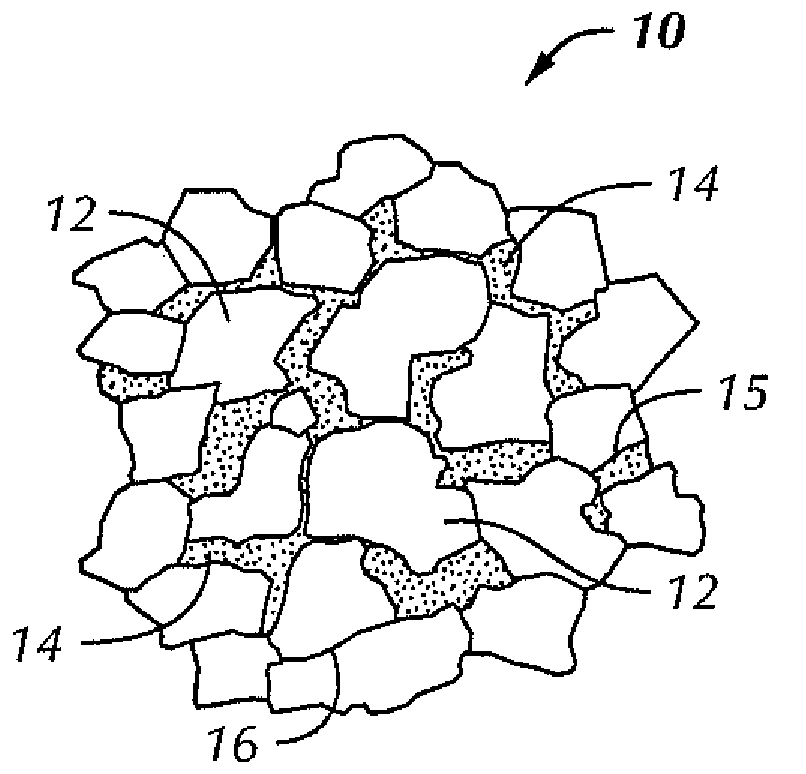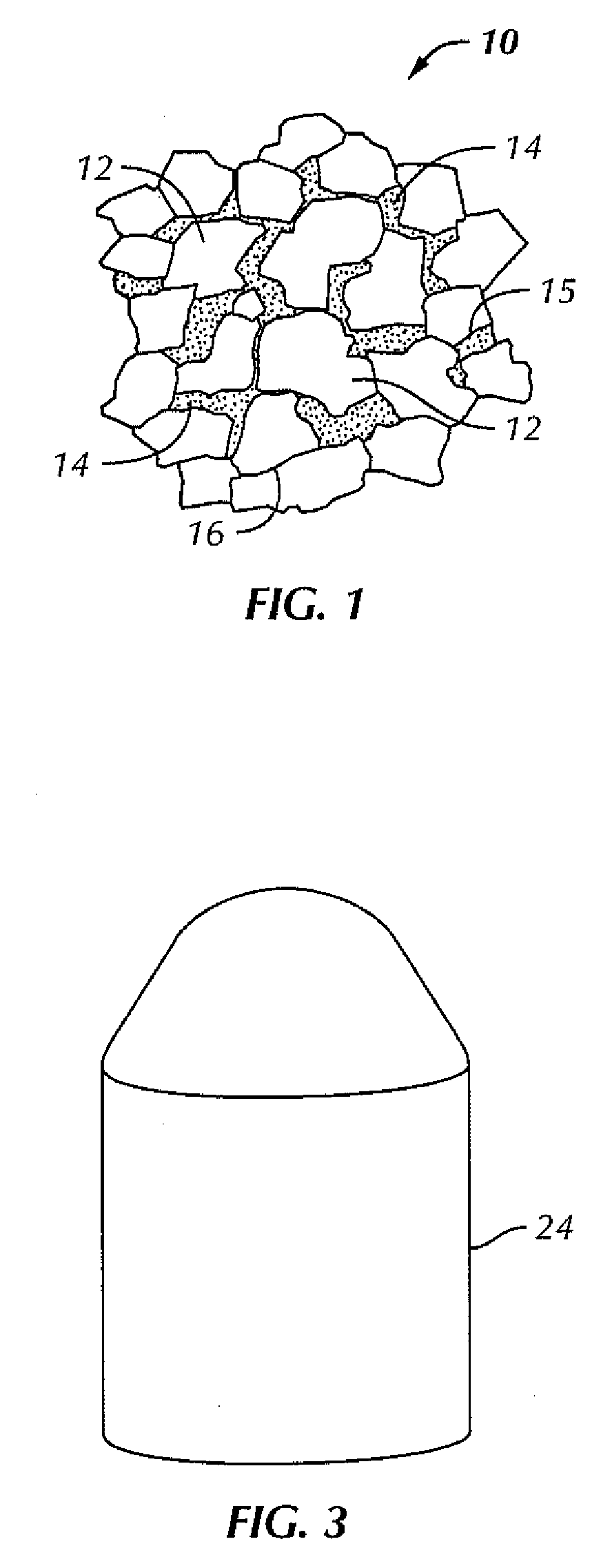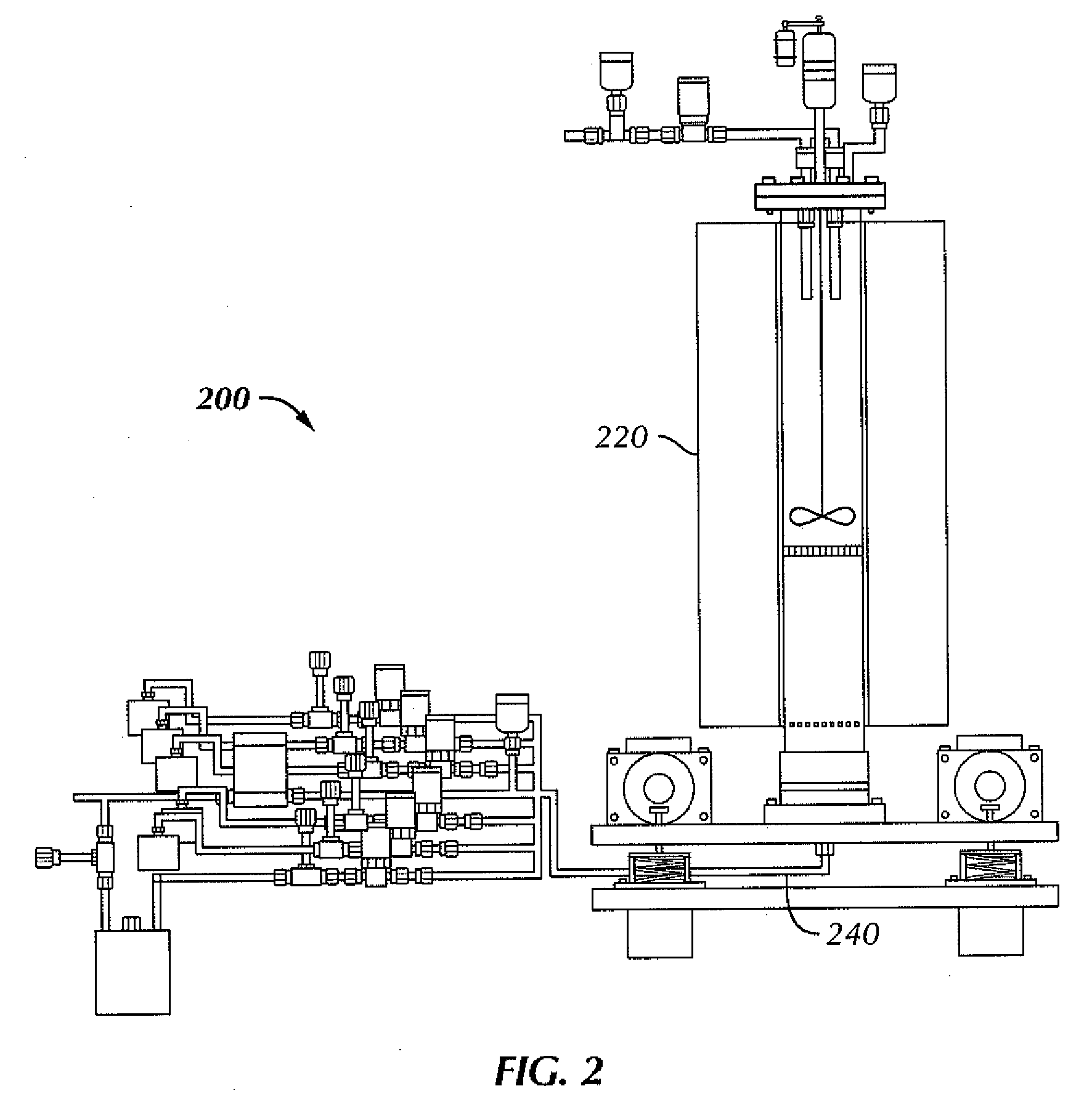Polycrystalline composites reinforced with elongated nanostructures
a polycrystalline composite and nanostructure technology, applied in the field of polycrystalline composites, can solve the problems of deterioration of the diamond table, micro-pitting (notches) of the diamond grain, brittleness, and less shock resistan
- Summary
- Abstract
- Description
- Claims
- Application Information
AI Technical Summary
Problems solved by technology
Method used
Image
Examples
Embodiment Construction
[0026]In one aspect, embodiments disclosed herein relate to composite materials used in components of downhole cutting tools, including drill bits, etc. In particular, embodiments relate to polycrystalline composite materials formed from diamond or cubic boron nitride particles and a binder material, with elongated nanostructures incorporated therein.
[0027]Ceramic materials generally used in the cutting tool industry include metal carbides, borides, silicides, nitrides, and diamond. Cermet materials are materials that comprise both a ceramic material and a metal material. An example cermet material is polycrystalline diamond that has been formed from synthesizing diamond crystals and a ductile metal binde or polycrystalline cubic boron nitride that has been formed from bonding cubic boron particles with a metal binder.
[0028]As used in this specification, the term “polycrystalline diamond” (PCD) refers to the material produced by subjecting individual diamond particles and additives ...
PUM
| Property | Measurement | Unit |
|---|---|---|
| Thickness | aaaaa | aaaaa |
| Thermal stability | aaaaa | aaaaa |
Abstract
Description
Claims
Application Information
 Login to View More
Login to View More - R&D
- Intellectual Property
- Life Sciences
- Materials
- Tech Scout
- Unparalleled Data Quality
- Higher Quality Content
- 60% Fewer Hallucinations
Browse by: Latest US Patents, China's latest patents, Technical Efficacy Thesaurus, Application Domain, Technology Topic, Popular Technical Reports.
© 2025 PatSnap. All rights reserved.Legal|Privacy policy|Modern Slavery Act Transparency Statement|Sitemap|About US| Contact US: help@patsnap.com



